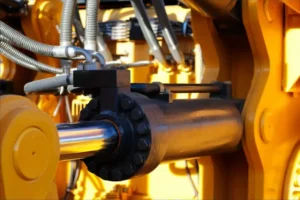The division of metals into ferrous এবং non-ferrous categories is based primarily on their iron content and the resulting differences in their properties এবং applications. This classification simplifies the understanding of a metal’s characteristics, behavior, and potential uses.
রাসায়নিক রচনা
- Ferrous metals contain significant amounts of iron as their main constituent, typically combined with carbon and sometimes other elements. The term “ferrous” comes from the Latin word ferrum, meaning iron. Common examples include ইস্পাত (iron with varying amounts of carbon) এবং cast iron.
- Non-ferrous metals, on the other hand, do not contain iron in appreciable quantities (or at all) and instead are made up of other metals. These include metals like অ্যালুমিনিয়াম, তামা, দস্তা, lead, and precious metals like সোনা এবং রূপা.
Corrosion Resistance
- Ferrous metals are prone to rust when exposed to moisture and oxygen because iron reacts with water and oxygen to form iron oxide (rust). This property limits their use in environments where corrosion is a concern.
- Non-ferrous metals are generally more resistant to corrosion. উদাহরণ স্বরূপ, অ্যালুমিনিয়াম forms a protective oxide layer that prevents further oxidation, এবং তামা develops a patina that also offers protection. This makes non-ferrous metals more suitable for use in marine environments, electrical applications, and outdoor equipment.
Strength-to-Weight Ratio
- Ferrous metals like steel tend to be stronger and more durable but also heavier than many non-ferrous metals. This makes ferrous metals ideal for construction, machinery, and structural applications where strength is paramount.
- Non-ferrous metals are usually lighter. এই ক্ষেত্রে, অ্যালুমিনিয়াম is widely used in aerospace and automotive industries because of its low weight and strength-to-weight ratio, which is essential for fuel efficiency and performance.
Magnetic Properties
- Ferrous metals are typically magnetic (লোহা, ইস্পাত, ইত্যাদি), which makes them useful in applications such as electric motors, transformers, and magnetic devices.
- Non-ferrous metals are generally non-magnetic (with some exceptions, like নিকেল করা এবং cobalt), which makes them useful in applications where magnetic interference would be problematic, such as in sensitive electronics or in the medical field (MRI machines).
Alloying and Versatility
- Ferrous metals are often alloyed with other elements to modify their properties. উদাহরণ স্বরূপ, adding carbon to iron forms steel, and adding chromium and nickel creates stainless steel, which is corrosion-resistant and strong.
- Non-ferrous metals are also alloyed for specific properties, such as brass (copper and zinc), bronze (copper and tin), এবং solders (tin and lead), but these alloys tend to have different characteristics than ferrous alloys.
Economic and Practical Considerations
- Ferrous metals, especially ইস্পাত, are typically less expensive than non-ferrous metals due to the abundance of iron in the Earth’s crust and the efficiency of iron ore extraction processes. This makes ferrous metals the material of choice for large-scale construction and industrial applications.
- Non-ferrous metals, being rarer or requiring more complex extraction processes, tend to be more expensive. যাহোক, their specific properties—such, such as corrosion resistance, conductivity, and low weight—justify the higher costs in specialized industries, such as electronics, মহাকাশ, and high-end manufacturing.
Melting Points and Processing
- Ferrous metals generally have higher melting points (যেমন, steel around 1,370°C or 2,500°F), which makes them suitable for high-temperature applications, such as in the manufacture of machinery, tools, and structural components.
- Non-ferrous metals typically have lower melting points (যেমন, aluminum melts at around 660°C or 1,220°F), making them easier to process and cast. This is one reason why non-ferrous metals are favored for certain precision casting applications and for producing intricate components in industries like electronics.
Environmental and Health Impact
- Ferrous metals often involve more environmental impact in their extraction and processing, particularly due to the use of large amounts of energy and the production of emissions during iron ore mining and steelmaking.
- Non-ferrous metals, such as অ্যালুমিনিয়াম, require significant energy for production, but some (like copper and aluminum) are highly recyclable and can be reused without significant loss of properties, making them more sustainable in the long term.
Summary of Why the Distinction Exists
- Iron Content: The most basic reason for the classification is whether or not the metal contains iron in significant quantities, which affects its behavior and uses.
- Corrosion Resistance: Non-ferrous metals generally have better resistance to corrosion compared to ferrous metals, making them ideal for certain environments.
- Mechanical Properties: Ferrous metals tend to be stronger and more durable, while non-ferrous metals are often lighter and more resistant to wear and corrosion.
- Applications and Cost: Ferrous metals are more economical and are typically used for structural purposes, while non-ferrous metals are used in specialized industries where their unique properties (like electrical conductivity, lightness, and corrosion resistance) are valued.
This classification helps industries, manufacturers, and engineers select the right material for specific applications based on their unique properties and performance requirements.

Shenguang induction furnace is specially designed for melting non-ferrous metals.







